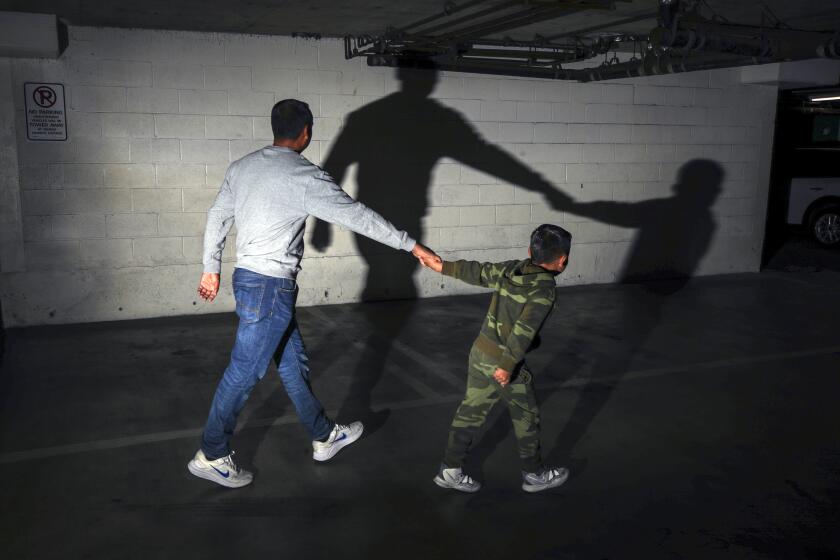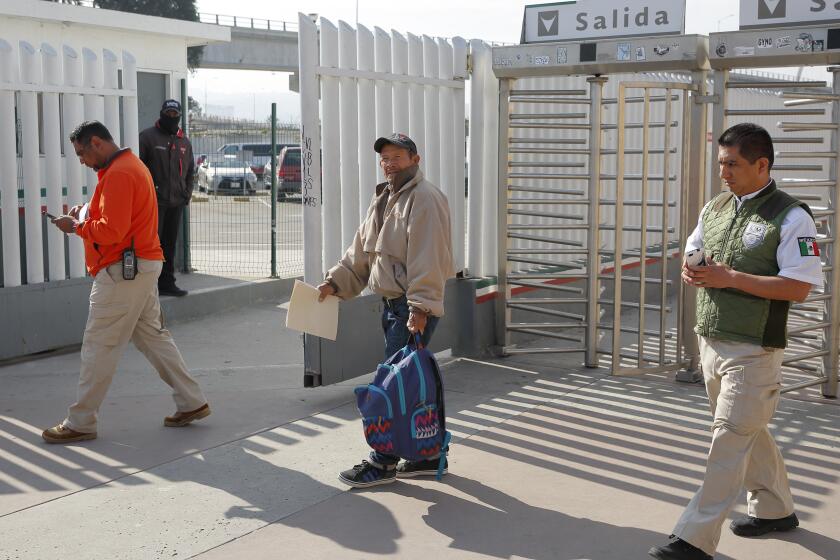The Biden administration remade ICE after Trump: But will it last?
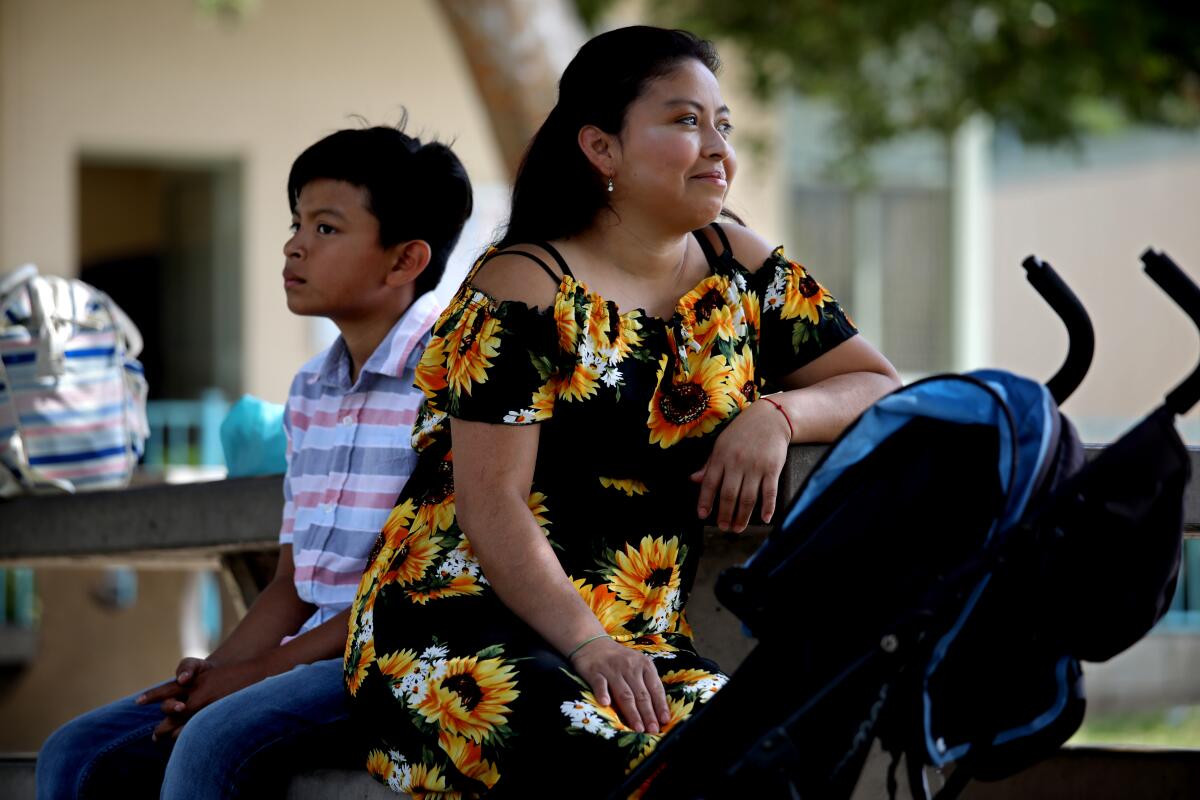
- Share via
As Anastasia Abarca left for work at 4:40 a.m., four immigration officers appeared at the door.
They asked for her brother. It was his home, and she had just dropped off her 7-year-old son there.
Abarca, a Mexican immigrant, was in the country without legal status. But she wasn’t the one they were looking for, and she had no criminal record.
Still, the officers from U.S. Immigration and Customs Enforcement arrested her and took her to a detention center 30 minutes from her home in San Jose.
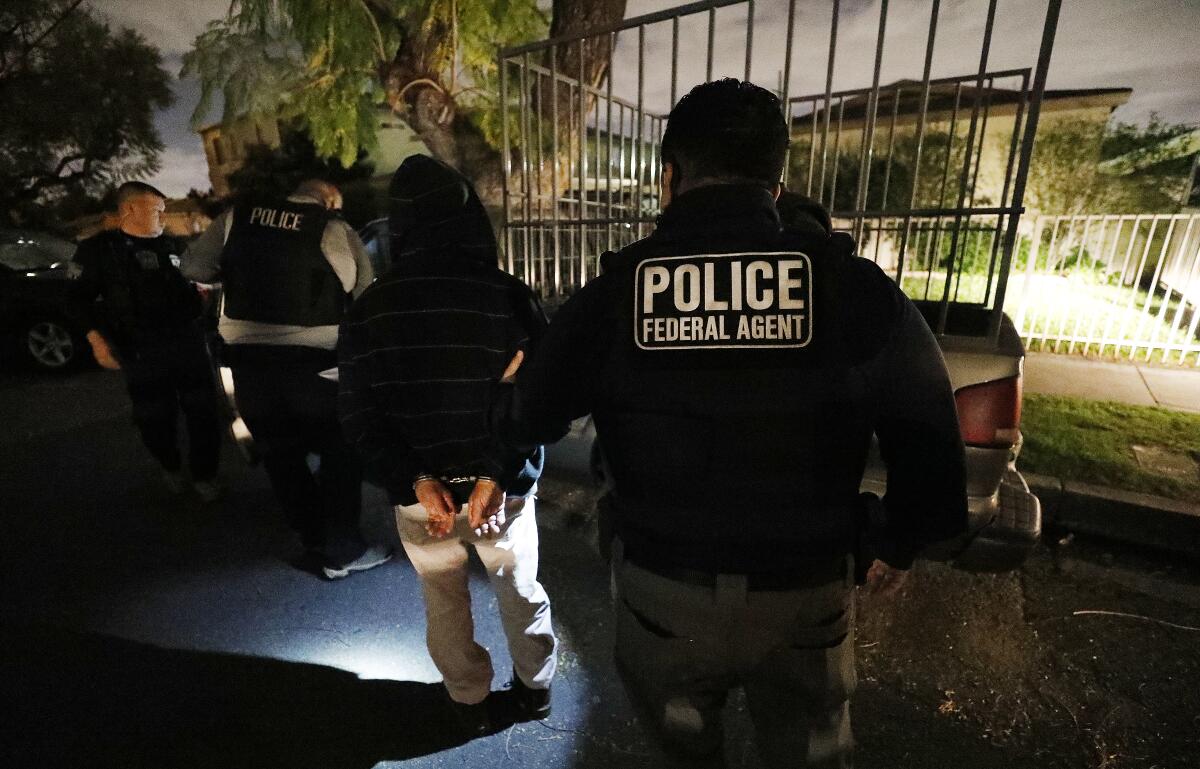
It was May 2019. During Donald Trump’s presidency, immigration enforcement had ramped up. Bystanders like Abarca, swept up in a search for someone else, were less likely to be spared.
Abarca, who worked as a baker and had been in the U.S. for about 14 years, was released that day. But a deportation order hung over her head.
After Joe Biden was elected president, people told her to have hope — he would be kinder to immigrants. Last December, her case was dismissed.
She still lacked legal status. But in a sign of the new administration’s priorities, cases like hers were increasingly removed from the docket so the government could concentrate on deporting others.
The new effort, called the Trusted Adult Relative Program, is being tested at a Border Patrol station in Texas, according to three sources who were not authorized to speak publicly.
Abarca hopes to one day get her U.S. citizenship, so she can live free from fear — and so she can visit her family in Mexico.
“I dream about having a house one day, to live peacefully and to be able to go back to my country and get to know my country,” said Abarca, 37.
Dramas playing out at the border are often the most attention-grabbing signs of immigration enforcement. How immigrants are treated in the interior of the country is less visible but equally telling.
True to Trump’s harsh anti-immigrant rhetoric, ICE officers in his administration were directed to make nearly every immigrant without legal status a priority for arrest — even if the person had deep roots in the U.S. and no criminal record.

High-profile operations targeted so-called sanctuary cities in California. Raids at worksites captured hundreds of immigrants at a time. Some immigrants camped out in churches to ward off deportation.
The Biden administration has reversed many of these changes and enacted some new policies, including limiting arrests of pregnant women and expanding “sensitive” areas such as playgrounds where arrests are generally off-limits.
The pandemic had already slowed immigration enforcement, and the new policies have further lowered arrest and deportation numbers, said Jessica Bolter, an immigration policy expert and former analyst at the Migration Policy Institute.
“Trump used ICE as the tip of the spear for his political agenda,” said John Sandweg, who led the agency during the Obama administration. “You certainly have none of that. That has all gone away. The agency is adhering to common sense priorities.”
Four agents involved in the incident have been referred for possible discipline, but the results of that process have not been finalized.
In late June, the Biden administration experienced a setback when its deportation priorities, establishing that lack of immigration status alone is not a reason to target someone, were challenged in court and suspended until the U.S. Supreme Court rules on their legality.
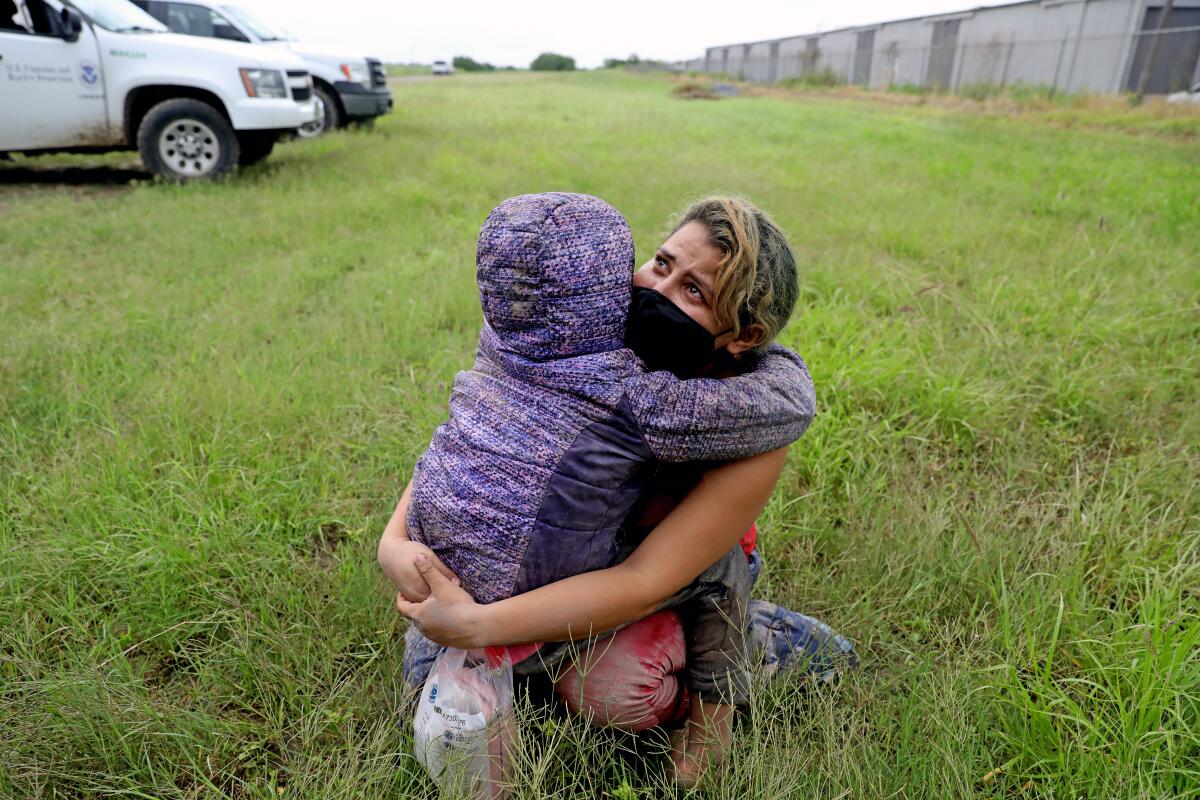
Democrats also need to appeal to swing voters, and the White House is under political pressure to be tougher on immigration.
Throughout the spring, White House officials pushed ICE for more deportations from a program called the “dedicated docket” that focuses on families, including many asylum seekers, who recently crossed the border, according to three sources with knowledge of the situation who were not authorized to comment publicly.
Launched by the Department of Homeland Security and Department of Justice in May 2021, the dedicated docket speeds up immigration cases from several years to about one year. Some within the administration saw it as a way to deter people from entering the U.S. by quickly executing deportation orders.
Since then, more than 60,000 immigrants have entered the expedited process, with about 11,000 receiving deportation orders, according to internal data obtained by The Times. Around 150 have been deported through July, the data show.
In March, DHS officials outlined options for how to efficiently deport the families ordered removed in the program, while detailing the downsides of the aggressive tactics.
Those options included detaining families in hotels and deporting them within 48 hours, arresting one of two adults in a family and fining families that did not leave the country.
A DHS document obtained by The Times noted the poor optics of arresting and forcibly removing families, explaining that it seemed to “conflict with the image of a new ICE” taking a holistic “approach to enforcement.”
A ‘dedicated docket’ intended to fast-track cases has led to more deportations of asylum seekers who often lack legal representation.
“Picking up a kicking and screaming child while mom and/or dad are restrained and ushered to the transport vehicle will not improve public perception of ICE or views around immigration enforcement,” the document said.
DHS officials decided not to adopt more aggressive tactics. But some officials say the pressure from the White House remains.
“They want the deterrent factor. They want removals,” said an administration official who was not authorized to speak publicly on the matter.
Marsha Espinosa, a DHS spokesperson, said the dedicated docket allows those who qualify for asylum or other legal status to obtain it more quickly.
“At the same time, those who are found not to have a legal basis to stay in the U.S. are ordered to be removed more quickly,” she wrote in an email. “We are continuously discussing and considering new proposals to strengthen our broken immigration system.”
A White House spokesperson said the administration was “working to process asylum claims expeditiously, granting relief where it is merited, and removing those found not to have a legal basis to remain in the United States.”
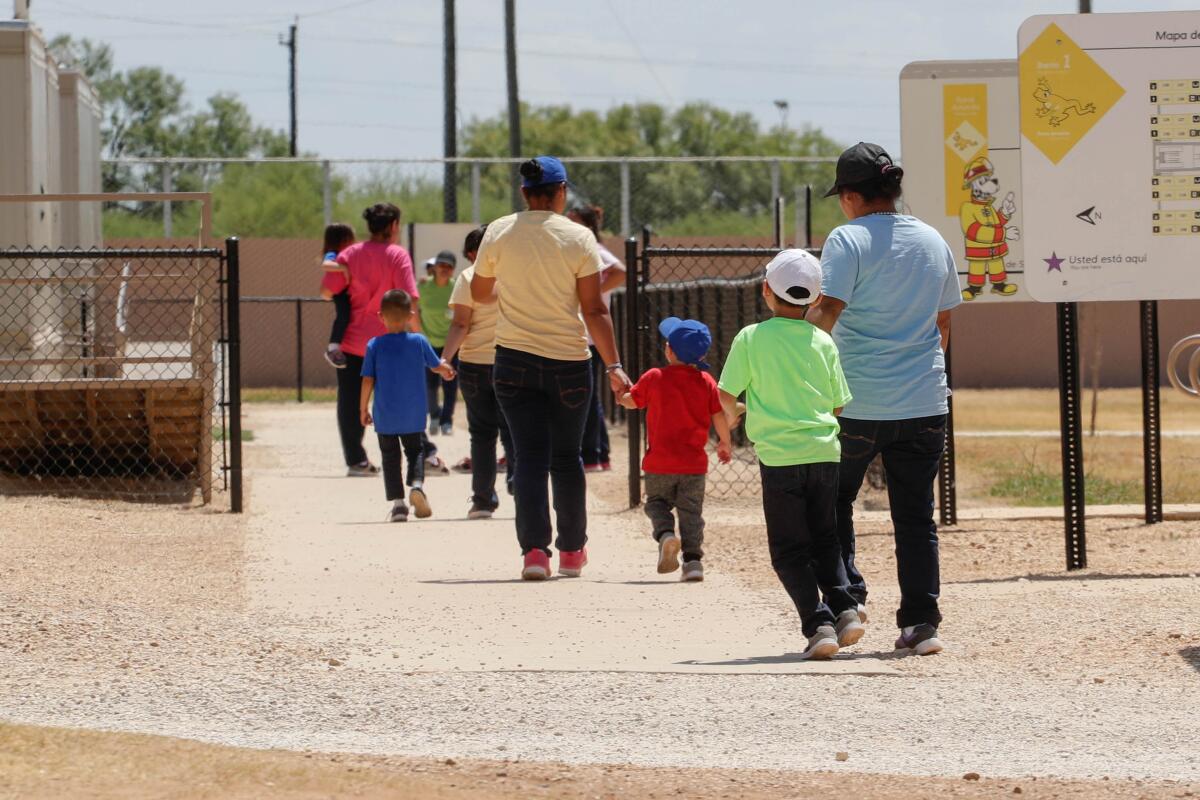
White House officials earlier this year asked whether ICE could reconsider a pandemic-related recommendation that no more than 75% of beds in detention centers could be filled, according to three sources with knowledge of the situation who were not authorized to comment publicly.
In June, ICE eliminated the recommendation. A DHS official said the change was due to new guidance from the Centers for Disease Control and Prevention and not because of pressure from the White House.
In the early days of the Biden administration, some ICE officials were eager to move past the Trump era.
“Remain in Mexico,” formally known as the Migration Protection Protocols Policy, forced back more than 60,000 asylum-seekers during the Trump administration, as part of an effort to deter migration at the southern border.
The agency trained officers on the new deportation priorities, which focused on immigrants in the country illegally who were public safety or national security threats. The officers were required to get higher-level approval if they wanted to deviate from the priorities.
The changes have pleased some immigrant advocates, while others argue that ICE is still arresting and detaining too many people.
“There has been a sea change when it comes to interior enforcement in the U.S., and that is a very good thing,” said Sergio Gonzales, the head of Immigration Hub, an immigrant advocacy organization.
Luis Angel Reyes Savalza, the attorney who represented Abarca, said in an email that “the changes have been slow, especially on the ground.”
The dismissal of Abarca’s case was “the exception, not the rule,” and ICE is still not using prosecutorial discretion as much as it should, he said.
But those in favor of stricter immigration enforcement say the Biden administration is sending the wrong message.
Ron Vitiello, an acting head of ICE during the Trump administration, said “the world” has noticed that if an immigrant is in the country illegally, federal authorities won’t be looking for them.
“The administration is putting forth the idea that interior enforcement or ICE’s work inside communities isn’t valuable, and I don’t agree with that,” he said.
Meanwhile, it could be almost a year before the U.S. Supreme Court issues a decision on the Biden administration’s deportation priorities.
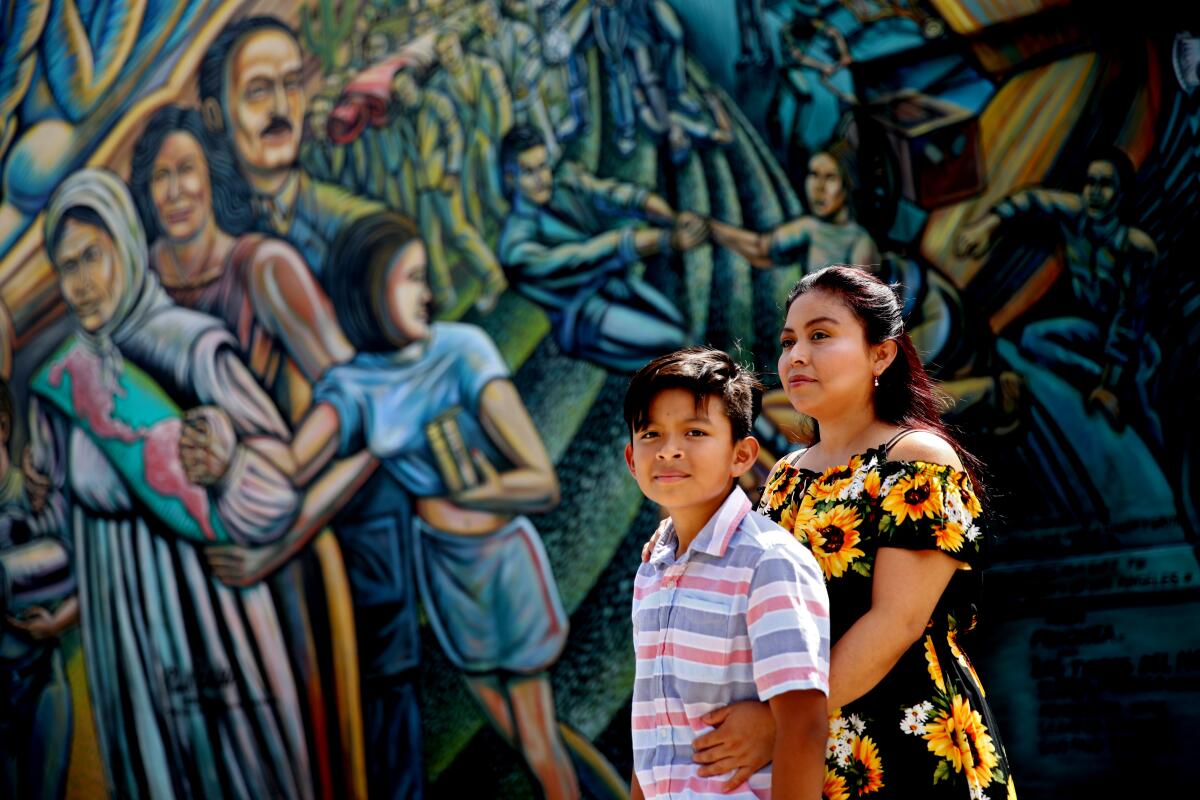
For immigrants like Lucrecia Puac Hernandez, the priorities were in effect at the right time.
Hernandez journeyed from Guatemala to the Rio Grande, crossing the river with her 4-year-old son on her shoulders in February 2016.
She was fleeing her son’s father, whom she said had extorted her and threatened to kill her.
Border patrol agents detained her and placed an electronic monitor around her ankle.
She eventually joined her mother in East Los Angeles, trying to build a new life while reporting to immigration court for hearings about her deportation case.
In March, her attorneys moved to dismiss her case, and ICE prosecutors didn’t object, since she had no criminal history and didn’t fit the new priorities.
Puac Hernandez, 34, has started looking for an apartment and imagining a future in the U.S. for her son. She works as an inspector at a clothing factory and also cleans houses.
But she fears what will happen after Biden leaves office.
“I think, God, will my case be reopened?” she said.
More to Read
Sign up for Essential California
The most important California stories and recommendations in your inbox every morning.
You may occasionally receive promotional content from the Los Angeles Times.


